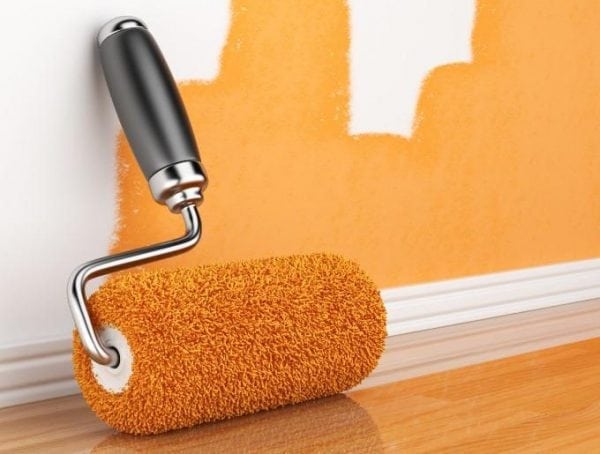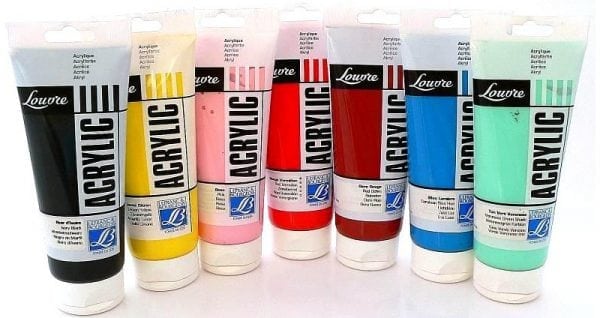Acrylic and oil paints are used when painting both exterior and interior parts of a building. Often there are situations when you need to paint with acrylic a surface on which there is a layer of old oil paint. Is it possible to combine these two completely different colors from each other? To give an answer to this question, it is necessary to understand in more detail the properties of both types of paints and varnishes.
Features of oil and acrylic paints
Oil base
Some 20-30 years ago, oil enamels completely dominated the market. Such solutions were used both for painting facades and in rooms. Nitro enamel became the first serious competitor to oil, and finally the dominance of oil compounds shook after the start of mass production of water-based paints, primarily acrylic.
Oil paints and varnishes are made on the basis of natural drying oil or its synthetic analogue mixed with mineral pigments. To obtain paint, its components are ground until a homogeneous mixture is formed.
Today, oil-based paints and varnishes are used infrequently, but sometimes there is still a need for them, for the following reasons:
- Affordability allows you to paint large areas with minimal paints with oil paints. Low cost is the main factor in the popularity of oil: as long as prices are low, demand for such solutions will exist.
- Resistance to negative effects of moisture. The oil protects wood, concrete and metal surfaces from moisture penetration into their structure.
- Often, oil paint is chosen because the surface has already been painted with varnish. Not all home masters are aware of the possibility of applying an acrylic composition to such a surface, and therefore they choose the simplest option - they buy an oil solution.
- Applying this paintwork material does not require any special knowledge and skills: you just need to dilute the composition with a solvent and stir.
Oil solutions also have serious disadvantages that limit their use:
- Not too much choice of colors. Most often, the assortment of stores has up to 10-12 shades.
- Low coating strength. For this reason, the painted surface needs regular updating (at least annually), which will require additional financial investments and labor.
- Toxicity of solutions. This category of paints is characterized by a specific and very stable odor. If painting is carried out inside the building, you will need to organize high-quality ventilation. In this case, while the paint is drying, avoid being in the room so as not to get toxic fumes poisoning.
- Long drying times. It takes at least 24-48 hours for the treated coating to completely dry.And this under ideal environmental conditions (appropriate levels of humidity and temperature, as well as the presence of ventilation).
to contents ↑
Acrylic base
Acrylate-based formulations are characterized by the following advantages:
- In comparison with oil, acrylic paints are much more environmentally friendly, since they do not contain organic solvents. Since acrylic solutions are based on water, such paints are free from a pungent odor.
- A huge selection of colors and subtle shades. There is the possibility of ordering the right color right in the store: the composition will be made in a special machine right in front of the buyer.
- Resistance to moisture, ultraviolet radiation, temperature differences, vapor tightness. As a result, you can use acrylic both indoors and for painting the facade.
- High strength surface. The coating becomes harder as it dries (water evaporation).
- Fast drying time - just a few hours. Moreover, some formulations can dry in just an hour.
- Long life of the coating. Compared to oil paint, acrylic is at least twice as long.
The only significant drawback of acrylic is its cost. However, the quality is worth the price.
to contents ↑Application of acrylic paint on oil
It is not recommended to apply the acrylic compound to old oil paint, since in this case good adhesion of the materials cannot be expected. It is much preferable if acrylic is used as the lower layer, and an oil solution is applied on top.
However, if desired, you can still treat the old oil layer with acrylic. However, in this case, you need to thoroughly prepare the surface.
Preparatory work is as follows:
- Grind the surface with a layer of old paint. For grinding, we need fine-grained sandpaper.
- We remove dirt and dust from the processed material, and then degrease the surface.
- We wait until the surface dries.
- Apply 2-3 layers of acrylic solution.
However, the preparatory work alone does not guarantee the successful application of acrylic on an oil base. To achieve the desired result, the acrylic composition should be quite thick, that is, diluted with water in a proportion not exceeding 1 to 1.
Note! If staining is carried out using a spray gun, you will need a special thinner. Depending on the type of thinner, the finished surface will acquire a matte or glossy shade.
Sometimes the oil composition is so firmly eaten into the surface that it is not possible to remove it. In such cases, paints with specially enhanced adhesive qualities, for example, Master-121, will help. Such paints can adhere even to moderately oily surfaces.







